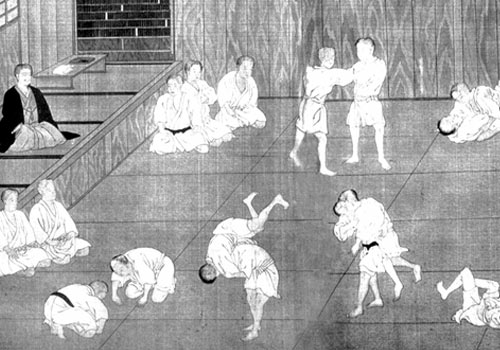Immerse yourself in the captivating world of martial arts, where strength meets strategy, and tradition intertwines with evolution. This post is an invitation to explore the remarkable journey of Jiu-Jitsu, a fighting style that has successfully transcended borders and cultures, while preserving its core philosophies and techniques. From the serene dojo of Japan to the vibrant beaches of Brazil, the art of Jiu-Jitsu has made a spectacular journey. In the process, it has evolved, incorporating unique techniques and strategies that have been influenced by regional nuances. This post delves into this evolution, comparing traditional Japanese and Brazilian Jiu-Jitsu, highlighting their shared roots and distinctive adaptations. Intricate techniques, strategic moves, and underlying philosophies that guide the art of Jiu-Jitsu will be meticulously dissected. Through this exploration, the profound influence of cultural contexts on the evolution of martial arts will be unveiled. Every technique, be it Japanese or Brazilian, echoes a story of time and place, waiting to be told. Not just a physical combat sport, Jiu-Jitsu is a testament to the power of the human spirit, discipline, and resilience. It serves as a platform for exploring human potential and pushing boundaries. As this post unravels the journey of Jiu-Jitsu, it endeavors to capture the spirit and essence of this age-old martial art. Embark on this enlightening exploration and discover the thrilling intricacies of Jiu-Jitsu. Witness how the art of combat has been unlocked through the ages, from traditional Japanese strategies to innovative Brazilian techniques. Whether you’re a martial arts enthusiast, an aspiring Jiu-Jitsu practitioner, or simply intrigued by the evolution of combat sports, this post promises a fascinating read.
Traditional Japanese Jiu-Jitsu: Origins and Techniques
The origin of Jiu-Jitsu traces back to the samurai warriors of feudal Japan. Traditional Japanese Jiu-Jitsu, often referred to as “Jujutsu,” is a combative martial art developed for battlefield use, focusing on defeating an armored opponent.

Techniques and Strategies
Japanese Jiu-Jitsu is a comprehensive system incorporating punches, kicks, knees, and elbow strikes, alongside throws, joint locks, and chokes. However, its uniqueness lies in its focus on the following:
- Atemi-Waza (Striking Techniques): These are techniques used to weaken or distract the opponent.
- Nage-Waza (Throwing Techniques): This set of techniques involves using the opponent’s momentum against them to execute a throw.
- Katame-Waza (Grappling Techniques): This involves ground fighting, joint locks, and chokeholds to neutralize the opponent.
Brazilian Jiu-Jitsu: Evolution and Innovation

Brazilian Jiu-Jitsu (BJJ) evolved from the traditional Japanese martial art in the early 20th century. Mitsuyo Maeda, a Jujutsu master, migrated to Brazil, teaching the Gracie family his techniques, who then refined these techniques and strategies to create BJJ.
Techniques and Strategies
While BJJ inherited many techniques from its Japanese predecessor, it distinguishes itself through its emphasis on ground fighting. Here are its key techniques:
- Guard Position: BJJ practitioners use this defensive position when on the back to control the opponent using the legs.
- Submissions: This involves applying joint-locks and chokeholds to force the opponent to submit.
- Passing the Guard: This is a strategy to get past the legs of an opponent in the guard position.
Comparing Philosophies: Japanese Jiu-Jitsu vs. Brazilian Jiu-Jitsu
While both martial arts share a common lineage, their philosophies have evolved distinctly, influenced by their cultural and historical contexts.
Japanese Jiu-Jitsu Philosophy
Japanese Jiu-Jitsu is steeped in the Bushido code of the samurai, emphasizing respect, loyalty, and courage. The art is holistic, aiming not just at physical prowess but also at the development of the character and spirit.
Brazilian Jiu-Jitsu Philosophy
BJJ philosophy is rooted in the idea of efficiency, patience, and control. It is designed for a smaller, weaker person to defend against a larger, stronger opponent by using leverage and proper technique, a philosophy embodied in the phrase “arte suave,” meaning “the gentle art.”
The Impact of Technological Advancements
As we continue to explore the evolution of Jiu-Jitsu, it’s essential to consider the role of technology. Through the use of video analysis software, practitioners can analyze and improve their techniques with precision detail. Additionally, online learning platforms have made martial arts more accessible than ever, offering lessons from top-ranking professionals worldwide.
Conclusão
In conclusion, the transformative journey of Jiu-Jitsu, from the samurai warriors of feudal Japan to the modern Brazilian incarnation, offers a compelling narrative on the evolution of martial arts. Both Japanese Jiu-Jitsu and Brazilian Jiu-Jitsu, although sharing a common lineage, have carved out unique identities. The former, steeped in the samurai’s Bushido code, emphasizes respect, loyalty, and courage, aiming for holistic development. On the other hand, the latter, underpinned by the philosophy of “arte suave,” empowers the smaller, weaker individual to overcome a stronger adversary through leverage and technique. Furthermore, the role of technology cannot be overstated. With advancements like video analysis software and online learning platforms, the art of Jiu-Jitsu has become more accessible and precise, opening doors for continued evolution and innovation. Indeed, as we unlock the art of combat, we find that Jiu-Jitsu, in its many forms, serves as not just a physical discipline but also a conduit for personal growth and cultural expression. As the evolution of Jiu-Jitsu continues, we can anticipate further exciting developments in this ever-dynamic martial art.
